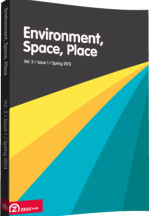Looking Back at the International Map of the World
Looking Back at the International Map of the World
Author(s): Peter NekolaSubject(s): Philosophy
Published by: Zeta Books
Keywords: Albrect Penck; geographical knowledge; International Map of the World
Summary/Abstract: This article takes a look back at the historical and philosophical context of the International Map of the World, humans’ first attempt at mapping the entire surface of the earth in detail on a uniform scale. Albrect Penck’s initial idea for a thoroughly detailed topographic map of the world, proposed at Fifth International Geographical Conference in 1891 and securing the support, both symbolic and financial, of many of the world's governments by the first decades of the twentieth century, consisted of a uniform series of hypsometrically-colored topographical maps overlaid with human data (urbanized areas, railroads, and other infrastructure, primarily) and dividing the world into consistently-scaled quadrangles. Envisioned by some geographers and cartographers as a component of the peace, both following both the First and then the Second World War, the project would come to be administered by international and non-governmental organizations by midcentury, as primary governmental support for cartography at that time increasingly reflected territorial interests and claims over and above those in favor of employing concepts of geographical knowledge that were not explicitly political or territorial. The slow demise of the project can be understood to signify the ultimate difficulty of a project that disacknowledged the fundamentality of politically constructed boundaries by employing another scale, in this case, a geometric scale with systematically geographical content, in order to frame its maps.
Journal: Environment, Space, Place
- Issue Year: 2013
- Issue No: Vol.5/1
- Page Range: 27-45
- Page Count: 19
- Language: English
- Content File-PDF

